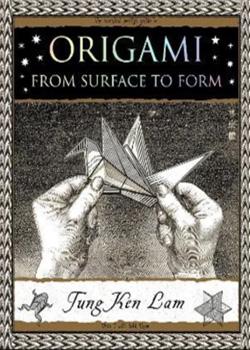Origami From Surface To Form

By Tung Ken Lam
Wooden Books (2022)
ISBN-13: 978-1907155451
Review by Robin Macey
This is the latest book by UK origami expert Tung Ken Lam who is noted for his work on origami and mathematics. Tung Ken’s modular creations, including the WXYZ and Jitterbug, are known around the world as fine examples of original and economical folding. He has taught and presented his origami work in Japan, the USA and across Europe.
This dense little pocketbook is split into 28 short chapters on different aspects of origami. It starts with the origins of paper making and then describes the standard diagram notation that is used in most origami books worldwide. There are several chapters related to origami and mathematics and mention is made of several theorems. For instance, there is a chapter on dividing angles by folding and how to divide the edge of a square into thirds in five different ways. There also are three chapters on modular folding where units are folded from several squares and then locked together without glue to make a star or 3-D modular polyhedra. Tung Ken also discusses how origami has been used by scientists to design a folding satellite dish that packs away very tightly before being unfurled. The book even touches on kirigami (a variation of origami in which the paper is also cut) and shows examples of a couple of origami models that use cuts as well as folding.
Diagrams are included throughout the book for about 25 different models most of them traditional designs. These include well-known classics such as the flapping bird, butterfly, swan, paper plane, paper cup, simple box and jumping frog as well as the water lily. In general, the model diagrams are clear and easy to understand although the single page for the blow-up frog was tricky to follow, and it might have benefited from larger diagrams being spread over two pages.
Overall, this is a nice little book and is a good introduction to origami and mathematics that also explains about the different styles of origami. It is also a handy source of many different traditional models.

